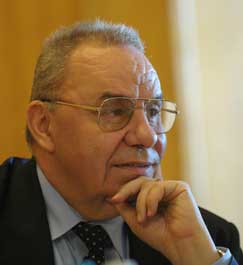The problems of the terrain transport networks in Europe have been the issues discussed upon on Tuesday in a public debate organized by the European Commission. The Europeans intend to use the Danube as a terminal for the European Corridor VII and to include in the network some highways and railways in Romania. However, the projects stumble against numerous critics.
|
|
|
 |
DISPUTES. As well as corridor 7 - channel Danube-Main-Rhine -, the entire TEN-T project caused a lot of criticisms.
|
BEGINNINGS
The bases of the TEN-T project appeared in 1993, and the actual works started in 1996. The continental transport netweork includes more than 75,000 km of highway, 78,000 km of railway, 330 airports, 270 seaports, and 210 river-ports in the entire Europe. Project TEN-T is the European Commissionâs response to the development needs of the great European Union. However, the project includes countries that are not EU members, like Romania and Bulgaria, as well as neighbor countries of the EU, like the ones in the Yugoslavian and former soviet space. At a first sight it seems an ambitious European project, with the purpose to improve the transportation towards the countries on the continent, but TEN-T is getting more and more criticized by many people in the European space.THE DEBATE
With the public debate on Tuesday, The European Commission let everyone speak freely about their opinions about the project. Most of the people who spoke have actually been the representatives of several business groups in more countries, who showed in detail all the Unionâs advantages if the parts in their regions would be finished first. Italian, French, Czech, Polish or Lithuanian they have all tried to show how important for TEN-T are the parts of highway, railway, channels that pass through their countries and none of them felt embarrassed to say the part in their country is the most essential to a powerful and well-done European transport network. No one talked about the projects that include Romania.THE UNIONS
The European workers have been represented by some unions, who seemed to not agree with the imposed dead-lines, with the fact that communitarian workers are preferred, taking into account that in the EU neighbor countries, which were already in the TEN-T, the unemployment rate is extremely high. A Swiss company which came to promote one of its inventions drew attention upon it. It is a project from last year, through which the people in a tunnel set on fire can be saved. Dragos Bucurenci raised the problem of a TEN-T part that goes through Romania, the European Corridor VII - the high depth Danube-Main-Rhine channel - respectively. As everyone knows, the Danube is the only European river that doesnât have a guaranteed optimum depth and that needs dredging. Moreover, on the closed sections, the riverâs width isnât the wished one either, so the banks will be dug. The present plans would lead to the destruction of 65% of the NATURE 2000 sites on the Danubeâs flow or would destroy the eyots on the inferior flow of the river, which will also affect the biodiversity. Bucurenci asked the Commission a few questions, referring to the fact that the Sulina arm in the Danube Delta has been chosen as the end of the Corridor VII. The increase in the ship number will lead to the increase in the traffic on a channel that is in the middle of a biosphereâs reserve and will affect even more the biodiversity that doesnât do very well now either, Bucurenci showed. In addition, the Commission will have to clear its position in the Bistroe channel case. And this is because, on one hand, there have been people saying the EU doesnât agree with this project in its present form, but, on the other hand, the EU-Ukraine common plan shows that "the two sides will actively take part in the promotion of the Danube with the purpose of using its entire potential as one of the spines of the European internal river transportation".PROBLEMS
The ecologists present at the debate have asked for more transparency from the European organizations regarding the TEN-T. They asked for such public debates to be organized at local level as well, because there are a lot of places where people donât know anything about the EU intentions. They have also criticized the fact that the projects have been in such a way to satisfy exclusively the Unionâs needs against the local or regional ones. Moreover, they asked for the ecologist organizations to be allowed to take part in the elaboration of the projects, besides the banks and other financial institutions and for the abidance of the environment legislation of the EU.Translation : SORIN BALAN








